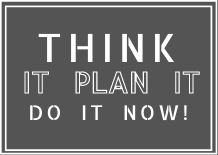
by Anthony Francis | Jul 4, 2018 | News
We’ve now become accustomed to hearing that different sports men and women, have coaches to help improve their game. Indeed, we think nothing of seeing the likes of Roger Federer or Serena Williams with their practice coaches before a game.
Even without thinking we can determine that having a sports coach is to help improve someone’s performance, or to iron out any areas that they are having with their game, so as to bring them as close to perfection as can be. Indeed, individuals like Roger Federer or Serena Williams employ a number of coaches, not only the ones we see them with on the practice court, but also for things with nutrition and wellbeing.
So given that we can see the benefits for sports men and women, why do we find it so difficult to see the benefits in coaches in helping businesses?
One reason is the fact that the term ‘Coach’ is not fully understood, and as a result is open to interpretation which causes confusion. So before I go any further let me give you my definition of a coach in a business context. “Business coaching is about developing bespoke processes that enables both individuals and businesses alike to achieve their full potential through partnership and collaboration”.
Business Coaching is not about Training which is about imparting new skills or knowledge, It’s not about Consultancy which is about external expertise in a particular area, it’s not about counselling which is about specialist activity into personal problems, and it’s not about Life Coaching which is about focusing on individual goals and aspirations. There is of course nothing wrong with these specific interventions, I mention them as they are the common areas that ‘coaching’ is often confused with.
Of course you can get coaches who have specific ‘niche’ areas within business, such as Marketing, Career, Branding etc. But they will all be about developing bespoke processes that enables both individuals and businesses alike to achieve their full potential through partnership and collaboration.
So if you engage with a coach for your business, you will be getting someone with specific skills and experience, who will be looking specifically at the required fundamentals needed that will make a difference, someone who is outcome focused, so that the business takes sustained action to help achieve rapid results.
They will in turn help the business to look at new skills and methods, which will help improve time efficiency and bring about sustained change and overall improvement.
A Business Coach can also be mirror that provides the unbiased feedback you need to help move a business forward. They provide someone to hold you accountable, and help develop your own self-confidence.
So going back to my opening statement, I hope you now can see that a Business Coach provides the focus, perspective and skills, to name but a few to help take a business forward, and should be seen as a valued asset to any business.

by Anthony Francis | Jun 24, 2018 | News
We all know that both in our work or personal lives, we will all have to deal with the impacts that change brings. Change can be something positive like getting that new job you’ve always wanted, or having to deal with the news of being made redundant, and the sense of loss that comes with that.
The one thing that we do know in life is that change is inevitable. So given that we know that, the question has to be asked why do we find change so difficult?
There are a number of reasons, but I one that seems to effect people the most is the following:
People resist change due to fear of failure.
You see despite what you might hear to the contrary, people once settled like the comfort that familiarity brings, that is why millions of us today find it so difficult for example to change banks, change jobs, start that business or even move home, simply because the fear of something going wrong makes us decide, it better to not make the change, and we end up saying things like “it’s better the devil you know”.
This unwillingness to change as a result of the fear of failure, is also a recognised condition known as atychiphobia. In other words, a condition in which it’s best to avoid the problem all together. It should also be mentioned that this condition is not exclusive to those formally diagnosed with it.
So what are some of the symptoms of fear of failure? The common ones are:
1: Self-Sabotage, such as Procrastination, or the failure to follow through with a goal.
2: A reluctance to try anything new or getting involved with anything challenging.
3: Perfectionism, where you’re only willing to try something you know you can complete.
So what can be done?
The first thing is to learn to think more positively. Now I know that is easier said than done, but positive thinking is a powerful way to build self-confidence.
You can start with doing an analysis of the potential outcomes? Many peoples fear of failure is due to the unknown, so if you can remove the fear by looking at what the potential outcomes would be, this can help provide you with better evidence to make your decision.
To help reduce the fear, it would be a good idea to have a contingency plan, if you know that you have a fall-back position then you may feel more confident in your ability to move forward.
How to help yourself?
There is no silver bullet, but if you decide what you would like to achieve, and then set yourself goals to get there, then this can be a good start.
There is the saying that if you don’t know where you’re going, then how will you know when you get there? So it’s important when trying to overcome a fear of failure to have vision of where you want to go, and an idea of how you can get there.
That is why setting clear goals can help, as they can provide both clarity and the sense of purpose, which can help you take those first steps to building your self-confidence and avoid any overwhelm when making changes. This in turn can help to reduce any fear that may be holding you back.

by Anthony Francis | Jun 19, 2018 | News
Okay, so you’ve had that eureka moment and come up with next big idea, you think it’s great, now what? …
I suspect we’ve all been there, thought of an idea that can rival Facebook, or even be the next Amazon, or maybe your idea hasn’t been for world domination as a new disruptor, but simply a great new business idea, that will give you the freedom you’ve always wanted.
Only one thing in the way, now what to do next?
Well, here are 3 tips to help turn that idea into something more.
1. Conduct some desk research
It’s important to separate out the emotion from the logic, so look into the idea in a more detail, see if anyone is actually searching online for your new idea, if so who are likely to be your competitors, what do you see them doing that you will do differently?
In short carry out your own SWOT analysis of your business idea against the market. SWOT stands for Strengths, Weaknesses, Opportunities, and Threats, and is intended to provide an objective view of your business project or venture, and to allow both the internal and external factors to be taken into consideration, and to identify where the competitive advantages lie.
2. Make some phone calls
Shock, horror, yes, after carrying out your analysis and determining that your idea might just have legs, the next thing you have to do is actually get on the phone and speak to people. Get out there and make appointments with those who could be potential customers to gauge reaction to your new idea.
You see, just carrying out the analysis is not good enough, you have to get out there and also test the idea by conducting market research, by use of surveys, micro events and workshops. The feedback you get will be invaluable in helping you determine if you should continue, make changes, or go back to your day job.
3. Build a prototype
Okay, the feedback has been good and your continuing, so now you need to formally produce either a working prototype of your product or the service that you are offering. This is where the rubber is going to hit the road, and your business goes from that idea you thought about, to the real thing.
As this is going to be your prototype it’s important to make sure it includes most of the benefits it will offer, as this will now be your ‘calling card’ and so you must ensure it has your bespoke unique selling point (USP) in it.
If you make it to this stage give yourself a pat on the back, because it means you’ve done what a lot of other people haven’t done, and taken real action to get your new idea off the ground.
The real work will now start with developing a formal project plan to turn your idea, into your new business.

by Anthony Francis | Jun 14, 2018 | News
It was Benjamin Franklin, one of the founding fathers of America who said “if you fail to plan, you are planning to fail”, which many years later was developed into the 5Ps Rule, Proper Planning Prevents Poor Performance.
Yet how many times have you heard that saying? I can bet it’s more times than you can remember. But yet how many times have you, or someone you know started out on a business idea or project without any clear plan for its success?
So lets look at what some of the key Essentials are to Successful Project Planning.
Every project needs a roadmap which clearly defines its goals and purpose.
We’ve all heard the saying, if you don’t know where you’re going, then how are you going to know when you get there? Well the same can be said for starting a project, that’s why it’s vital from the outset you know what the outcome of your project goal will be, and the roadmap you will use to get you there.
However, that’s not all, it must also identify what will be the deliverables and in what order, who is involved, what are the estimated time lines for each delivery, and how success will be measured.
Without a clear outcome your project will lack direction and clarity, which ultimately can lead to disarray and a failed project.
A resources sheet which identifies availability and skills
Unless you’re doing a fairly straight forward project, it’s fair to say that you will need to call upon additional resources. The resource needed will of course depend on the size and scope of your project, when you need them, and where they will be located from?
In addition, depending on the complexity of the project, you may also need additional specialist support. If that is the case it would be useful to list down in advance all the resources needed and for what activity in a resource sheet. This sheet can then be used to track who is doing what, identify the specialist tasks needed, as well the involvement of any third-party resource.
It can therefore be seen that a resource sheet is vital if you want to keep track of what is going on in your project, who is involved and by when. It can also save you a lot of time and money by arranging any such resources in advance, and thereby avoiding those last minute tasks when deadlines are looming.
A costs and the budgeting sheet to capture any procurements or suppliers
Research has found that one of the biggest areas that projects fall down on is on costs. It would seem that both individuals and businesses alike, embark on a business projects simply by making vague estimates without any real research, or even worst simply start the project with no idea on what on the projected costs might be.
For that reason, it is vital that before you start any project that you have identified in advance the following: 1. What the expected costs are likely to be, 2. Where you have sourced the funds, 3. Who will sign off for them within an organization, 4. When will they be available, and most importantly 5. Have a mechanism in place to track those costs against your budget.
It is also important to remember that when you start a project, you never know what obstacles you may run into, so for that reason it is vital that you set aside some additional finances as part of a contingency.
Engagements that might be involved
One area that is often overlooked, whether that be within a business starting a project, on by that of an entrepreneur, is the involvement of all those that will be engaged within both the management and delivery of it.
For a business the resource is normally a virtual team, made up of individuals from other parts of the organisation. What this can mean is unless specifically arranged upfront, the virtual resource may not be available when needed, or cannot stay as long as was initially intended, so it’s vital that the resources engagement is agreed in advance.
For entrepreneurs the same rule applies, albeit the resources may be that of family, friends and business associates. However, the same applies, the resources are virtual and not dedicated to the project, so again it’s important to secure in advance the resources needed and by when.
A communications plan setting out who is going to receive messages about the project
It’s funny, when something goes wrong or doesn’t go according to plan and the question goes out “who was responsible for that”? There is always a deadly silence. There may of course be a multitude of reasons why something didn’t go according to plan, but I suspect the main reason will be down to good communication, or lack of it.
Having some form of communication plan, regardless of the size of a project is a must. Yes, different projects will of course demand different means of communications, a large project requires more structure, but a smaller one doesn’t mean you can just wing it.
It should also be mentioned that communication plan isn’t about shouting out directives, and then telling someone I told you. If you want the buying from all those involved, then it’s about being clear to all at the beginning of the project by detailing down what the project is about, who are the main contacts, and who to speak to when seeking assistance.
Remember, communication is a two-way process, so it’s vital if you want to avoid that ‘no one told me’ scenario, that everybody involved not only knows what the communications channels are, but the process to use.
Purpose of the Risk Management Plan
What an earth is a risk management plan I hear you ask? Well, despite our best endeavours, there will always be something that does not go quite to plan. The purpose of the Risk Management Plan is to find a way of a identifying, mitigating and controlling the risks that may occur in a project, and in so doing, minimize the impact of a risk on the success of the project.
More specifically, risk management is used to:
Manage and identify risk opportunity
Ensure a consistent approach is used across the project by all
To be proactive in managing risks
Ensure that the appropriate level of objectivity is applied to the process
Ensure that all outstanding issues are resolved in a timely manner
A Risk Management Plan also helps provides the steps for recording the risks, which can be as follows:
Describe the risk – specifically and accurately
Assess the probability or likelihood of the risk eventuating
Assess the impact on the project, from the perspective of performance, quality, schedule and cost
Documents the risks thereby identifying an owner and agreed delivery dates for ensuring actions

by Anthony Francis | Jun 8, 2018 | News
We all know the names of successful entrepreneurs, people like Richard Branson, Steve Jobs, Bill Gates, Jeff Bezos and Mark Zuckerberg to name but a few. But the question is what are some of the skills and attributes needed to become a successful entrepreneur?
Below I provide a list of the 7 Secrets needed for entrepreneur success.
Know their purpose, and can clearly articulate it
When Bill Gates founded Microsoft, he famously said he had a dream to put “a computer on every desk and in every home”. He was very clear on what his vision was, he knew the purpose of it and its possible impact, not only that he could clearly articulate it. This is a great example to anyone starting out in business with aspirations of becoming an entrepreneur to be clear on the purpose of what they are doing, there reasons why, and then to be able to clearly communicate this to any audience when asked.
Have a well-defined niche
We’ve all heard the saying jack of all trades and master of none. Well this is the same if you’re in business and try to market your product to everybody, you inevitably attract nobody. The reason for this is very simple, you need to know who your product or service is targeted to, where they can be found, what are their ages, backgrounds etc. In essence you need to get a PhD in who your prospective customers are, so that you can target them accordingly, better known as your ‘niche’ market.
Can personally educate your prospects as to the causes of their problem
In setting out on the road to become an entrepreneur, one thing that should be paramount in your mind is that prospective customers don’t wake up in the morning thinking they need or even want the product or service you are offering.
This means when you have the opportunity to present your product or service, it will be down to you to clearly demonstrate that you both understand and can educate them in the nature of their problems, what the possible solutions are, and then most importantly what are the benefits they will derive from it.
Must have excellent interpersonal skills
We all know someone who likes the sound of their own voice, and once they get started no one can get a word in edgeways. As a prospective entrepreneur this kind of trait could be seen as the kiss of death to a prospect. The term ‘shark salesmen’ comes to mind, or the sometimes less than pleasant experience of when buying a car.
For any prospective entrepreneur, it is essential that you can demonstrate the following attributes; communication skills, active listening, leadership & motivation, an ability to negotiate and last but not least have integrity.
A structured method to clients from where they are to where they want to be
A prospective client not only needs to feel assured and confident that you understand their problem and can solve it, but also that you have a demonstrable process that you can take them through.
You see the first part of the client engagement is in demonstrating your competency, once that hurdle has been successfully navigated, you then earn the right to then demonstrate your process in how you will go about solving their problem. Ideally this should not involve too few steps that makes the prospect feel they could do it themselves, but also not too many to render it too complex to understand.
Ensure their core business delivers remarkable value to their market niche
The best way of getting new business is by way of referrals and testimonials. They are by far the fastest and most cost effective way to get in front of potential new prospects, with the best part being it hasn’t cost you anything.
However, to get to this holy grail you need to have a business that delivers remarkable value each and every time for your customers. In this digital age in which we now live, where a bad comment/s can have detrimental impact to future orders, it is vital to remember that within your niche your potential prospects will talk, and if word gets round that you don’t deliver what you say you will, then your chances of becoming an entrepreneur will be short lived.
Ability to self-reflect and not to become complacent
Not a day now goes by without news about another well-known high street brand experiencing trading difficulties. The question has to be asked what are the management teams within these companies doing, to not be aware that they are losing share price, customers, or what the latest tools or technologies are in the market?
One word keeps coming up time and time again, that of complacency. Companies like HMV, Maplin, Woolworths and Comet to name but a few, became all too complacent in themselves and their business models, and failed to see or react to the new competition and the change in buying habits of their customers, as a result of the Internet.
That is why it is crucial for anyone with aspirations of becoming an entrepreneur, to ensure their business is constantly being reviewed, so that they don’t become complacent and as a result fail to stay in business.

by Anthony Francis | May 29, 2018 | News
Don’t you find it funny that there are some things we have no problem in doing, like setting a date for going out for a meal, going to the cinema, or may be a date to meet up with friends, but then there are other things in which we know we should do, but guess what we tell ourselves things like I’ll do it later, it doesn’t have to be done now, or worse yet we find other things to do instead, which could be the very reason your reading this article right now.
So what makes us put off some things but not others, or put simply why do we procrastinate?
As a coach I come across this question time and time again, and it’s no surprise given that it’s a human condition that from research findings suggest it can affect as many of 95% of us. Which begs the question what do the remaining 5% know that we don’t?
So, what are the things that make us procrastinate? From what I’ve found the reasons seem to fall into the following characteristics.
These are as follows:
Ambiguous
Unstructured
Not rewarding
Boring
Frustrating
Difficult
Lacking in personal meaning
What do we see at play from this list? It’s clear that there is a little battle going on within our heads between that of the logical part of our brain, and that of our rational thinking, and the one that more than most comes out on top, and which will ultimately determine our behaviours is the rational.
So if you’ve got that piece of work to do but your favorite team is playing on the box, then it’s no surprise that you end up watching the match. Same can be said for that idea you want to sit down a work through, but there always seems to be a reason why you don’t do it.
So what can be done to help us avoid procrastination? Well some of the ideas put forward are:
Work within your resistance level. In this instance it’s about finding a length of time that you would be happy to work on the activity for, and then actually doing it. So it’s about setting a timescale that won’t make you feel like it’s a chore, but one your happy to do.
Do something — anything — to get started. I’ve come across research that says we remember uncompleted or interrupted tasks better than projects we’ve finished. So it would appear it’s much easier to keep going with a task after you’ve overcome the initial barrier of starting it in the first place, or even after you’ve been interrupted, results show once you start your more likely to complete it.
List the costs of procrastination. This idea works best for larger tasks, so for example moving home. However, it’s also worth making a list of some sorts of the things you put off personally and professionally, large or small, and then calculating the costs of procrastination for each.
Take time out and Disconnect. You know where this one is heading don’t you? Yes, it’s our social media habits, the emails, texting, talking, posting, commenting, anything to do with social media that involves us interacting with our friends or family. So to avoid the temptation of distraction, turn them all off.
As with working within your resistance level, set yourself a timescale if that works better for you, say one hour, so you know you have that reward coming.
These are a few simple steps that you can take, to help avoid that procrastination doesn’t get in the way of you accomplishing your most important tasks.






